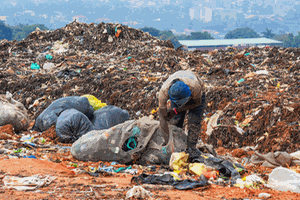Motorists face long detours following Karuma Bridge closure

All road users have been blocked from accessing the bridge, with all motorists diverted. PHOTO | COURTESY | UNRA
What you need to know:
- The government closed the defective 61-year-old bridge to pave the way for its reconstruction, which is expected to take three months.
Movement on the Kampala-Gulu highway was on Monday paralysed following the total closure of Karuma Bridge that links northern Uganda, South Sudan and DR Congo.
The government closed the defective 61-year-old bridge to pave the way for its reconstruction, which is expected to take three months.
As a result, all road users have been blocked from accessing the bridge, with all motorists diverted. Those plying the Kampala-Karuma-Gulu, and the Kampala-Karuma-West Nile routes have been diverted at River Kafu via Masindi town onwards to Paraa and exit onto the Pakwach-Karuma thoroughfare at Tangi gate, and follow the same reverse trip.
Motorists from Lira to Kampala have been provided with three alternative routes. They can use the Lira-Dokolo-Soroti-Kumi-Pallisa-Tirinyi-Nakalama through Iganga onwards to Kampala via Jinja, and vice versa. The motorists can also access Kampala through Kamdini to the T-Junction on the Karuma Bridge approach, and onwards to Paraa and Masindi town and exit onto River Kafu.
Another alternative route for motorists from Lira to Kampala is through Apac via Masindi Port, and onwards onto Rwenkunye. This alternative route increases by 153 kilometres, the usual distance on the 338-kilometre drive between Kampala and Lira through Karuma.
Buses from Lira heading to Kampala using the park route would need an extra 70 litres of fuel compared to the 120 litres required on the Lira to Kampala via Kamdini route.
With a litre of diesel trading at Shs4,900 in Lira City, the buses would need an additional Shs343,000 compared to Shs588,000 for fuel from Lira to Kampala via Karuma.
Altogether, a bus setting off from Lira to Kampala via the park would need 190 litres of fuel worth Shs931,000.
Nonetheless, the alternative route cuts the distance for a traveller to West Nile by roughly 80 kilometres in addition to potential fuel savings.
There are, however, other hurdles such as the speed limit on the newly-surfaced oil road inside Paraa at 40 kilometres per hour under which a trip from one side of the gate to the other takes a minimum of two hours. This means time saved could be lost in slower travel than on the Gulu highway via Karuma.
The hurdles
There’s also a final time travel limit every day by 5pm, beyond which no motorists can cross into Paraa, meaning more drivers and passengers are more likely to incur additional expenses on accommodation on either side of Murchison Falls National Park when caught by time.
Buses heading to Kampala using the eastern route would need extra 45 litres of fuel (about Shs220,500), according to Uganda Bus Drivers Association.
Mr Ali Masoud, the chairman of the Uganda Bus Drivers Association, advised motorists from Lira heading to Kampala to utilise the park during daytime and the eastern route at night.
The transport fare for passengers remains the same at Shs40,000.




